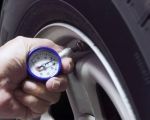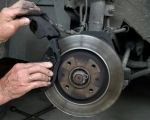How Can I Fix a Flat Tire? A Step-by-Step Guide for Roadside Repairs
If you've ever been stuck on the side of the road with a flat tire, you know how frustrating it can be. It’s one of those moments when you wish you had the right tools or knew exactly what to do. But don't worry! Fixing a flat tire is something that most people can do on their own, and with the right preparation, it’s a task that doesn’t have to be daunting.

MR. TIRE INC.
2078 New York Ave, Huntington Station, NY 11746, USA
1. Why You Need to Know How to Fix a Flat Tire
Being able to fix a flat tire is a crucial skill for any driver. Whether you’re on a road trip, commuting, or running errands, the possibility of encountering a flat tire is real. In my experience, having a plan and knowing how to fix a flat tire gives me peace of mind, especially when I’m driving through remote areas or at night. Plus, fixing a tire on your own can save you time and money by avoiding costly roadside assistance fees.

MR. TIRE INC.
2078 New York Ave, Huntington Station, NY 11746, USA
2. Tools You’ll Need to Fix a Flat Tire
Before you can get started on changing your tire, you’ll need to gather a few tools. Here’s a list of what you’ll need:
- Spare tire: Make sure it’s properly inflated and ready to go.
- Car jack: This will be used to lift the car off the ground.
- Lug wrench: You’ll need this to remove the lug nuts holding the tire in place.
- Tire iron or breaker bar: A breaker bar can provide extra leverage if your lug nuts are too tight.
- Wheel chocks: To keep your vehicle from rolling while you work.
- Gloves: These will protect your hands from dirt and grime.
- Flashlight: If you're working at night, a flashlight is essential.
Having these tools in your vehicle at all times can make a flat tire less of a hassle and give you the confidence to take care of the situation on your own.
3. Finding a Safe Location
The first thing you’ll want to do if you get a flat tire is to ensure your safety. This step is crucial! If you're on a busy road or highway, pull over to a safe spot as soon as possible. Ideally, you should park your car on level ground, away from traffic. Turn on your hazard lights to make yourself visible to other drivers.
If you’re on an incline, place wheel chocks behind the opposite tire to keep your car from rolling. This will give you more stability as you work on the tire change.
4. Loosening the Lug Nuts
Once your car is safely parked, it’s time to loosen the lug nuts. Start by using your lug wrench to break the seal on each of the nuts. It’s important not to remove them entirely at this stage; you just want to loosen them while the tire is still on the ground. Loosening the lug nuts before raising the car will prevent the tire from spinning and allow you to apply more force.
In some cases, lug nuts may be very tight, so using a tire iron or a breaker bar might give you extra leverage. Remember to turn the wrench counterclockwise to loosen the nuts!
5. Lifting the Car with the Jack
Now it’s time to lift the car off the ground. Position your car jack under the vehicle’s jacking point, which can be found in your car’s manual or by looking for the reinforced section along the frame. Once it’s in place, slowly raise the car using the jack. Make sure the car is high enough to fully remove the flat tire and replace it with the spare.
Never get under the car while it’s being lifted. Ensure the jack is securely positioned before moving forward with the tire change.
6. Removing the Flat Tire and Installing the Spare
Once the car is lifted, it’s time to remove the loosened lug nuts. Take them off completely and set them aside in a safe spot, as you’ll need them later. After removing the lug nuts, carefully pull the flat tire off the hub. At this point, you can replace it with your spare tire. Align the holes in the spare tire with the bolts on the wheel hub, then slide the tire onto the bolts. Push the tire firmly into place.
Once the spare tire is on, it’s time to secure it. Place the lug nuts back onto the bolts and tighten them by hand. Don’t fully tighten them at this point—just make sure they’re snug enough to hold the tire in place while you lower the car.
7. Lowering the Car and Tightening the Lug Nuts
Now, lower the car back to the ground slowly using the car jack. Once the car is fully lowered, you can begin tightening the lug nuts with the lug wrench. Start by tightening each nut in a star pattern, which ensures the tire is secured evenly. It’s important to apply as much force as possible to fully tighten the nuts, so they don’t come loose while driving.
After tightening the lug nuts, you can remove the jack and check that everything is securely in place. Take a final look to ensure the tire is seated properly and the lug nuts are tight.
8. Final Checks and Tips
Before driving off, make sure to double-check your spare tire’s pressure to ensure it’s safe to drive on. Additionally, keep in mind that spare tires, especially "donut" spares, are designed for short-term use. It’s crucial to get your flat tire repaired or replaced as soon as possible to avoid driving on the spare for too long.
Lastly, remember to take your flat tire to a professional for repair or replacement. If you’re not comfortable performing these steps yourself or lack the proper tools, don’t hesitate to call roadside assistance or a mechanic for help.




























